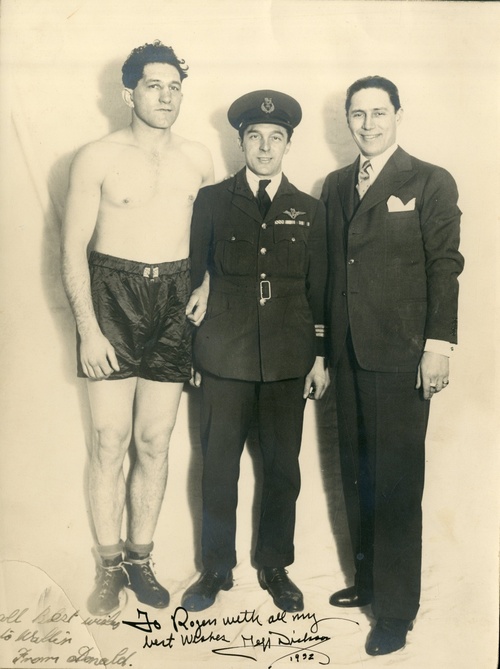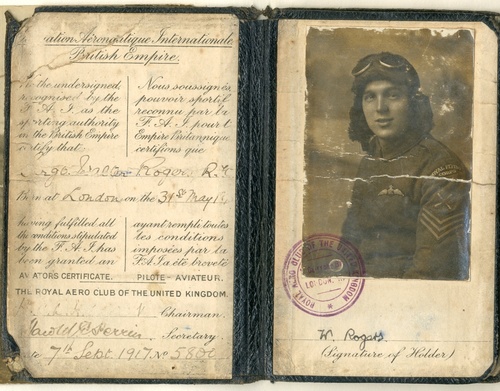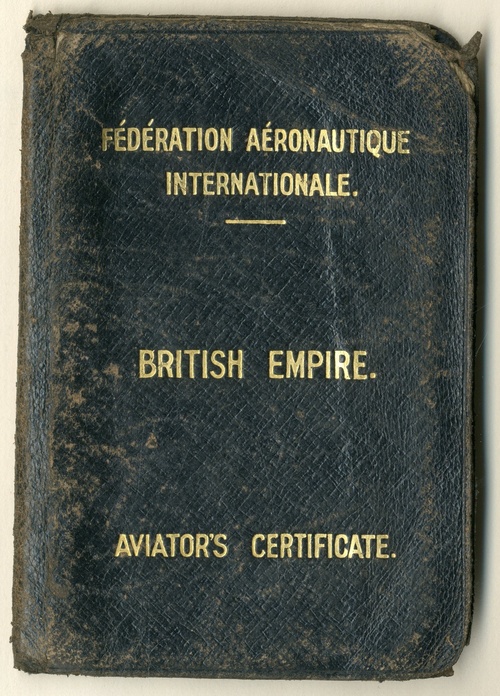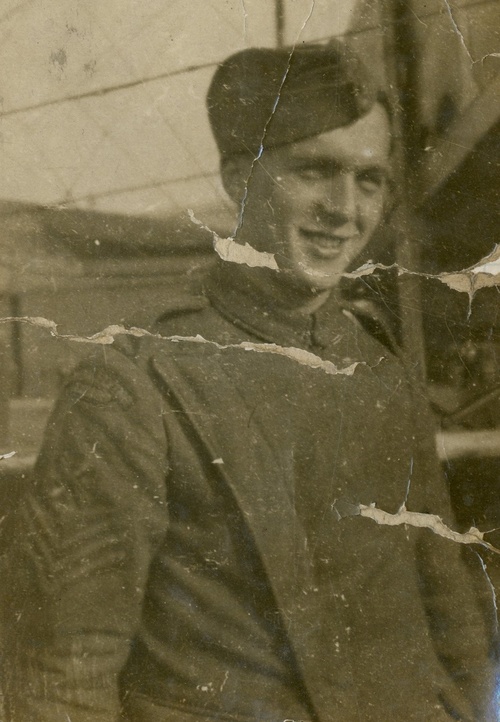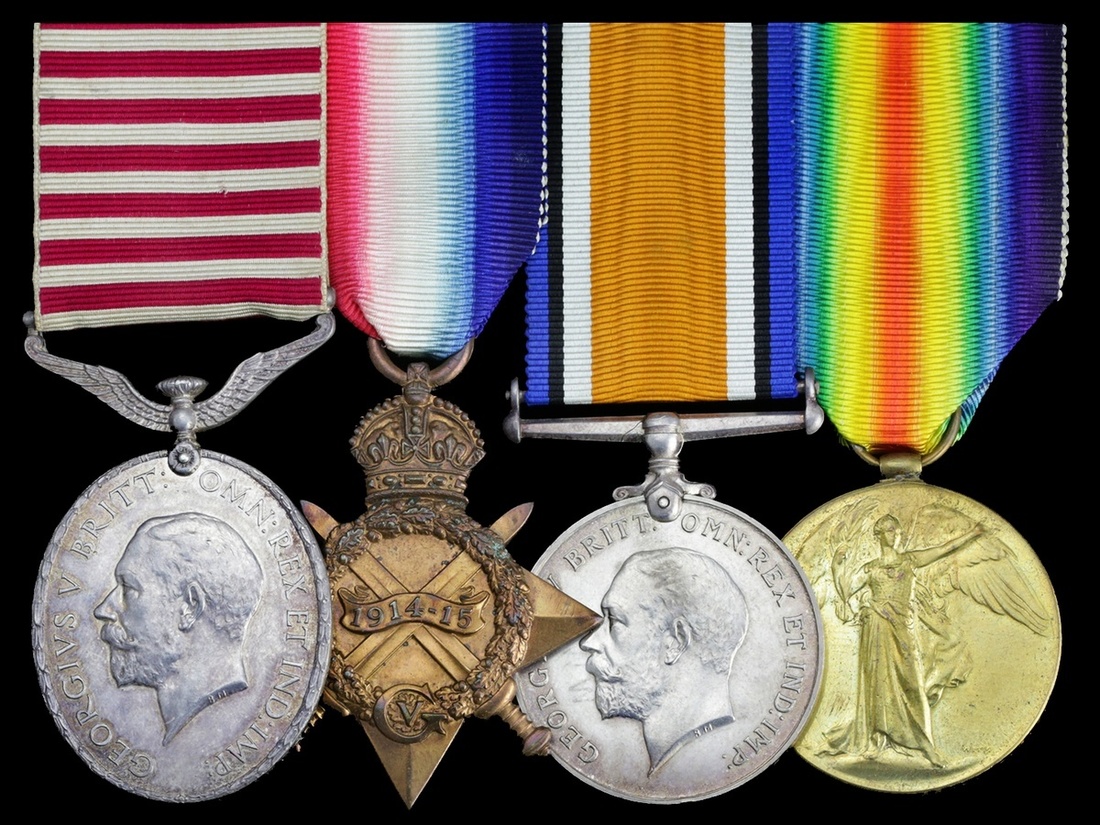Auction: 18001 - Orders, Decorations and Medals
Lot: 15
'Pilot Has a Million Reasons for Saying "Flying is Safe"
Do you know what Captain W. Rogers, Imperial Airways senior pilot, says?
"I have flown more than a million miles and have never had an accident. That shows how safe flying is."
Bald facts about Captain Rogers apart from the million-mile achievement are:
He has just completed 10,500 hours in the air.
He has crossed the Channel more than 4,000 times.
Human facts about Captain Rogers are still more interesting:
He is the fittest, most invigorating man you could hope to meet.
He told me: "Yesterday I was taking up a small aeroplane; left the ground in a few seconds, naturally. Yet I can remember when one got into the forerunner of that aeroplane and friends on the aerodrome would lay odds as to whether you would ever get off the ground, or, if you did, which tree you would hit before you got clear." '
The Daily Express, 16 November 1935, refers.
The exceptional Great War A.F.M. group of four awarded to Sergeant W. 'Cockney' Rogers, Royal Air Force, late Royal Flying Corps, who flew operationally in France before being decorated for his gallant work in the hazardous employ of the Ferry Service
One journalist described his as a man bereft of nerves, another as a 'fantastic person' who was blessed with 'a keen sense of humour', all essential prerequisites for the early days of civil aviation. A founder pilot of Imperial Airways, he set about blazing a trail of 'firsts' in the 1920s and 1930s
His friend 'GPO' Olley may have beaten him to the one million miles flown mark in 1931 but 'Cockney' claimed a 'royal first' in March 1928, when he flew King Amanullah of Afghanistan over London. His Majesty - the first King to have taken to the skies over the capital - rewarded his pilot with the Order of the Throne, in gold
The ongoing success of the 'Silver Wing service' out of Croydon to Paris was largely due to 'crack' pilots such as 'Cockney' Rogers, but in common with his fellow aircrew he was often diverted on special-charter work further afield. He hit the headlines in 1936 - 'Italians Brutal to British Flyers' - when he and his crew were arrested in Libya. It was a nasty incident which resulted in a formal complaint being delivered to the Italian ambassador
Having also led the way in opening-up the first commercial flights to Scandinavia and Athens - the latter in his Argosy's open-cockpit - he became a prime mover in establishing the British Air Line Pilots Association (B.A.L.P.A.). It was, he went to great pains to explain, 'a professional association and not a union'. Imperial Airways remained unconvinced and he was made redundant in 1937
Never idle, 'Cockney' carried on work as a freelancer and found much work flying journalists around at the time of the Munich crisis. He finally hung up his flying helmet at the end of the 1940s
Air Force Medal, G.V.R. (1018 Sergt. Mech. Rogers. W., R.A.F.), with original horizontal-striped riband; 1914-15 Star (1018 1.A.M. W. Rogers R.F.C.); British War and Victory Medals (1018 Sgt. W. Rogers. R.F.C.), good very fine or better (4)
A.F.M. London Gazette 1 January 1919.
Walter 'Cockney' Rogers was born in Vauxhall, London on 31 May 1895. He left school at the age of 14 and had several jobs locally before he joined the Royal Flying Corps on 2 January 1914, aged 18 years.
Off to war
Initially attached to No. 6 Squadron as a mechanic on the home establishment, he went to France with No. 10 Squadron in late 1914 and witnessed active service as a Gunner and Observer before returning to the U.K. in November 1915, to be hospitalised after an appendix operation.
In April 1916, he was posted to Castle Bromwich, and thence to the Flying School in May 1917, where he gained his Royal Aero Club Certificate No. 5800 in August 1917.
He was again posted to France, serving with No. 11 and No. 48 Squadrons, flying artillery reconnaissance sorties from Bellvue.
In February 1918, he came home to take up an appointment in the Ferry Service, a challenging - and hazardous - occupation. His fellow 'ferryman', 'GPO' Olley, M.M., takes up the story:
'This work of testing new and untried craft certainly had its exciting moments. Cylinders would suddenly blow off engines. Mechanical defects of all kinds would develop in the air. One had to make hurried forced landings in all sorts of awkward places. But, though it was all rather trying, it was, of course, fine experience from a flying point of view, teaching one to be ready for any sort of emergency that might arise.'
Rogers - who was injured in an incident on 24 February 1918 - was awarded the A.F.M. He nonetheless made light of his exploits, for his modesty was as well-known as his skills as a pilot.
Thankfully, his demanding role as a Ferry Pilot had been the subject of lighter moments, such as the occasion he was returning from delivering an aircraft to France. On disembarking at Dover - covered in grease, oil and mud - a group of ladies thanked him for 'doing his bit against the Hun' and presented him with chocolates and cigarettes. A humbled Rogers could not summon the courage to tell them he made the same trip at least twice a week.
The golden age of civil aviation
On leaving the Royal Air Force in February 1920, he took up a job with Handley-Page, flying passengers in converted bombers, a business that evolved into Instone Air Line Services.
He then became a founder pilot - one of 16 - of Imperial Airways. In that pioneering capacity, he had the distinction of being the first pilot to carry out commercial flights to Norway and Sweden, in addition to being the first pilot to fly a King over London. This was King Amanullah of Afghanistan who visited England in early 1928. As reported in The Times, he asked to be introduced to Rogers when they landed back at Croydon. He 'complimented him on the skilful way in which the aircraft had been handled, expressed his pleasure at the smoothness of the flight, and remarked that he had never before flown in a commercial airliner'. Rogers was duly awarded the Order of the Throne, in gold, which distinction, alas, was later lost.
During the 1930s he was Senior Captain with Imperial Airways flying the 'Silver Wing service' from Croydon to the Continent, mainly in HP 42s and Argosy aircraft. He also undertook some notable trail-blazing flights to Italy, Greece and the Middle East.
In 1935, as cited above, he completed his millionth mile flown in the air, totalling some 10,500 flying hours. In the following year, he had the misfortune to be the subject of brutal treatment by Italian soldiery in Libya. A newspaper feature takes up the story:
'Reports of "brutal treatment" of an Imperial Airways "crack" pilot and his crew of three men, by the Italian army authorities in Libya, are being investigated by the Foreign Office.
It is alleged that the four men were treated with extreme harshness by the Italian soldiers, and that one least one occasion they were paraded as objects of derision, and at the point of bayonets, before Italian troops … The machine landed at Mesylam, in Libya, and was immediately put under armed guard. The pilot and crew were also put under escort and closely questioned. All their documents were seized … '
It was a deeply unpleasant experience but ended the following day, when 'Cockney' and his crew were permitted to continue their journey. The Italians claimed his aircraft had flown over 'military areas' at Amsat, even though these areas were - by earlier agreement with the Italians - on a pre-arranged flight path.
In 1937, following his leading role in establishing B.A.L.P.A., he was made redundant. Never idle, he set about work as a freelance pilot, his passengers often being newspaper reporters. Busy times quickly followed, not least during the Munich crisis in September 1938.
When the Second World War broke out, he was again involved in flying and testing 'crash repair' - and - other aircraft.
Post-war, he became one of the first pilots to start flying commercial aircraft again, this time with the Hunting Group, and he eventually retired from Civil Aviation at the end of the 1940s, after 34 years' association with all aspects of flying.
Beyond doubt one of civil aviation's 'greats', the modest Rogers retired to the Sussex coast and died in 1977, aged 82.
Sold with the following original documentation and items, the majority pasted by Rogers within a sketch book:
(i)
Federation Aeronautique Internationale, British Empire, Aviator's Certificate, No. 5800, dated 7 September 1917, bearing the signature of 'Sergt. Walter Rogers, R.F.C.', and an excellent stamped half-length portrait photograph in uniform.
(ii)
Air Ministry (C. A. Form 8B), Licence for Pilot of Aircraft Carrying Passengers or Goods for Hire or Reward, Class B, No. 475, issued 19 March 1920, to 'Walter Rogers'; this shows the regular renewal of his licence, based upon passing fit in medical examinations, from 18 September 1920 to 20 September 1923.
(iii)
Great Britain and Northern Ireland Air Ministry Pilot's Certificate and Licence - for Public Transport or Aerial Work Flying Machines, No. 475, issued at London, 31 August 1936, to 'W. Rogers'; this shows the regular renewal of his licence, based upon passing fit in medical examinations, from 17 August 1936 to 14 February 1948.
(iv)
United Kingdom of Great Britain and Northern Ireland Passport, No. 389305, to 'Mr. Walter Rogers', issued 24 June 1931 and subsequently renewed 23 April 1936; this contains a large number of visa stamps showing that Rogers travelled widely across Europe and the Middle East in the mid-late 1930s, including Greece and Italy (1936), Egypt and Iraq (1936), France and Germany (1938), Switzerland and the Channel Islands (1939).
(v)
An interesting archive of photographs (approx. 15), commencing with an image of Rogers which he has annotated beneath by hand, 'After my first solo. This is an enlargement, 1917'; also included is an annotated image of Rogers, identified standing in a group shot before a biplane at Coventry Aerodrome, January 1919, together with a further superb image of 'Colonel Minchin, Walter Rogers and Gordon Olley' at Croydon, about 1924, with examples of clothes worn under their "Sidcut" suits, about 1924. There are further images of Rogers in the 1930s, and post-war era.
(vi)
An archive of contemporary newspaper cuttings, one titled "Million-Air Rogers - His Mileage is his Fortune," dated 15 November 1935; a second feature from the Daily Express, 16 November 1935, also refers.
(vii)
A typed transcript document, taken from The Times, 22 March 1928, detailing a pleasure-flight above London, captained by Rogers, when his passengers were the King of Afghanistan, Sir Samuel Hoare (Secretary of State for Air) and Air Vice-Marshal Sir Sefton Brancker (Director of Civil Aviation).
(viii)
A letter of thanks from the Commissioner of Police, New Scotland Yard, London, S.W.1., thanking Rogers for his valuable services on 31 May 1932, in Stafford Road, Waddon, when a Constable sustained injuries in attempting to stop a runaway horse: 'Your public spirited action in placing your car at the disposal of the injured Constable, especially in view of the pressing nature of your business, is greatly appreciated.'
(ix)
Original R.F.C. bullion wings, R.F.C. fabric shoulder title and very rare Imperial Airlines bullion wings.
Subject to 20% VAT on Buyer’s Premium. For more information please view Terms and Conditions for Buyers.
Estimate
£6,000 to £8,000


